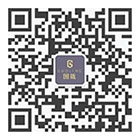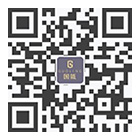Jiao Hanwei: The definition of trade mark infringement
Trademark refers to the commercial signs used to distinguish different sources of goods and services. It is composed of words, graphics, letters, numbers, three-dimensional signs, color combinations, sounds or the combination of the above elements. It is one of the most important components of a brand. According to official data, in 2018, the number of trademark registration applications in China was 7.371 million, and the number of trademark registrations was 5.07 million; By the end of 2018, the number of valid trademarks registered in China (excluding foreign registrations in China and Madrid) reached 18.049 million, and the number of trademarks owned by every 10,000 market entities reached 1,724. This not only shows that the scale of registered trademarks in our country is huge, but also shows that trademarks play an increasingly important role in commercial management. With the increasing importance of trademark in business operation, trademark disputes are also on the rise. In the trademark dispute, trademark exclusive right infringement dispute is the main dispute category. What is the trademark right infringement dispute? Does trademark use constitute infringement? The accurate definition of the boundary is not only a legal problem, but also a business problem, which affects the realization of the business purpose to a large extent. The important significance of law is to guide operators to achieve their business objectives in the most appropriate way within a specific boundary. Jiao Hanwei, lawyer of Shanghai Guolinghouse Law Firm, will discuss the definition of trademark infringement from two angles of law and business, so as to provide reference for operators.
Forms of infringement of exclusive trademark right.
Trademark infringement means that the actor uses the same or similar trademark on the same or similar goods without the permission of the trademark owner, or other acts that interfere with or hinder the use of the trademark owner's registered trademark and damage the legitimate rights and interests of the trademark owner. What specific behavior belongs to the infringement of the exclusive right to use a trademark? In order to effectively protect the exclusive right of trademark and ensure the unity of judicial standards, the trademark Law of our country defines the forms of infringement of the exclusive right of trademark. The trademark Law of China uses the combination of enumeration and summary to express the infringement of the exclusive right to use a trademark. The following acts are violations of the exclusive right to use a registered trademark: (1) using the same trademark as its registered trademark on the same kind of goods without the permission of the trademark registrant; (2) Without the permission of the trademark registrant, using a trademark similar to its registered trademark in respect of the same kind of goods, or using a trademark identical with or similar to its registered trademark in respect of similar goods, which is likely to cause confusion; (3) selling goods that infringe upon the exclusive right to use a registered trademark; (4) forging or manufacturing without authorization the marks of a registered trademark of another person or selling the marks of a registered trademark forged or manufactured without authorization; (5) replacing its registered trademark without the consent of the trademark registrant and placing the goods with the replaced trademark back on the market; (6) Intentionally providing convenient conditions for the infringement of another person's exclusive right to use a trademark, helping another person to carry out the infringement of the exclusive right to use a trademark; (7) causing other damage to another person's exclusive right to use a registered trademark. In the absence of legitimate defense reasons such as unregistered trademarks and invalid registered trademarks, the implementation of the above acts constitutes infringement in the sense of trademark law, and it is necessary to bear the responsibility of stopping the infringement and compensating for losses. Among the above seven violations of the exclusive right to use registered trademarks, the first and second are the most common types of trademark infringement disputes at present.
Trademarks are identical or approximately defined.
In the infringement of trademark exclusive right mentioned above, trademark identical or similar is one of the key elements for the final determination of infringement. Only trademarks that are identical or similar may constitute infringement, otherwise they do not constitute infringement. What are trademarks identical or similar? According to the relevant provisions of the trademark law, the trademark is the same, means that the trademark accused of infringement is compared with the registered trademark, and the two are basically no difference in vision, from the perspective of ordinary consumers, judging that the compared trademark is generally no difference, it constitutes the same trademark. Similar trademark refers to the comparison between the trademark accused of infringement and the registered trademark, the font, pronunciation, meaning or graphic composition and color of the text, or the overall structure after the combination of its various elements is similar, or its three-dimensional shape and color combination is similar, which is easy to cause the relevant public to misidentify the source of the commodity or think that its source has a specific connection with the registered trademark commodity. Generally speaking, judging that trademarks are the same or similar involves the subjective criteria of the judging subject, which can be carried out in accordance with the following principles: (1) taking the general attention of the relevant public as the standard; (2) Both the overall comparison of the trademark and the main part of the trademark shall be compared, and the comparison shall be carried out separately in the state of isolation of the objects of comparison; (3) In determining whether a trademark is similar, the significance and popularity of the registered trademark requested for protection shall be taken into account. It is important to emphasize here that the judgment whether a mark is identical or similar should be based on the general attention of the concerned public, not on expert or professional opinion. The "relevant public" refers to consumers who are related to a class of goods or services identified in a trademark and other operators who are closely related to the marketing of said goods or services. Among these two parts of the public, any part of the people involved are the relevant members of the public as stipulated by the law, and not both of the people involved constitute the relevant members of the public as referred to in the trademark Law.
Definition of identical or similar goods.
When determining the infringement of the exclusive right to use a registered trademark, whether the goods or services involved are the same or similar is another key element in determining whether the infringement is constituted. Only the same or similar goods may constitute infringement, otherwise it does not constitute infringement. Generally speaking, the same goods and services are easier to identify; Similar goods and services are much more complicated. What are the criteria for judging the similarity of goods? According to the relevant laws of China's trademark law, similar goods refer to goods that are the same in function, use, production department, sales channel, consumption object, etc., or the relevant public generally believes that there is a specific connection and it is easy to cause confusion. Therefore, the factors to judge similar goods include the function, use, production department, sales channel, consumption object and so on. Is it subject to the classification of goods and services under the International Classification of Goods and Services for Trademark Registration and the Classification of Similar Goods and Services when judging whether similar goods are similar in trademark infringement disputes? Is it possible to determine trademark infringement by identifying similar goods or services based on the International Classification of Commodities? Generally speaking, the most important function of the classification table and the distinction table is to divide the categories in the registration of the trademark, to facilitate the registration review and trademark administration, and the commodity is similar to the original inconsistent. Therefore, when judging whether the goods are similar, it cannot be used as a basis, and can only be used as a reference to judge whether the goods are similar. The relevant laws of China's trademark law also stipulate that the determination of whether goods or services are similar should be based on the general understanding of the relevant public on the goods or services. The International Classification of Goods and Services for Trademark Registration and the Classification of Similar Goods and Services can be used as a reference for judging similar goods or services, but cannot be used as a basis.
To sum up, if the operator encounters the confusion of whether a certain act constitutes trademark infringement in the business process, it can be defined from the above aspects of the form of the act, whether the trademark is the same or similar, and whether the commodity is the same or similar. If a trademark identical or similar to a registered trademark is used on the same or similar products, and there is no legal defense, it is an infringement of the exclusive right to use the trademark. If the operator is a trademark registrant, it should actively exercise its trademark rights and protect its trademark interests through legal means. If the operator is the unauthorized user of the trademark, it should correct its own behavior at the first time to avoid legal disputes and losses.







